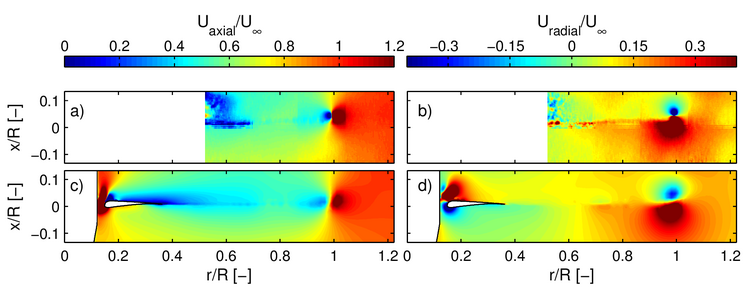3D
3D
3D Simulations
The design of wind turbines typically relies on the blade element momentum theory (BEM). The BEM method is fast and it has proven to be reasonably reliable for certain operating conditions. However, some of its basic assumptions are in fact unrealistic. For instance, the assumption of annular radial independency is violated as soon as spanwise flows are present in the boundary layer. This occurs very often under stall and yawed flow conditions. The azimuthal flow homogeneity, implying an infinite number of blades, is another assumption which is known to be far from realistic. In order to account for these (and other) limitations of the BEM method, engineering correction models have been developed by the scientific community with the intention to obtain more accurate results from BEM without compromising its computational efficiency. However, most of the available correction models still present much room for improvement. The development of more reliable and physically-sound correction models requires a deep understanding of the physical mechanisms governing the power extraction from the wind. In our group, we aim at gaining that knowledge through the use of more advanced numerical tools, like Reynolds Averaged Numerical Simulations (RANS) and Detached Eddy Simulations (DES). Currently we are investigating different aerodynamic phenomena like rotational augmentation, dynamic stall, tower shadow, tip losses, etc. An important part of our work is the validation of our numerical results with experimental data. For this, we use measurements from different wind turbines, e.g. the MEXICO and NASA UAE Phase VI turbines. The picture shows an example of a comparison between experimental and numerical results in the MEXICO turbine.
The knowledge we gain from our simulations is applied to the development of improved correction models as well as in the optimized design of rotor blades.



